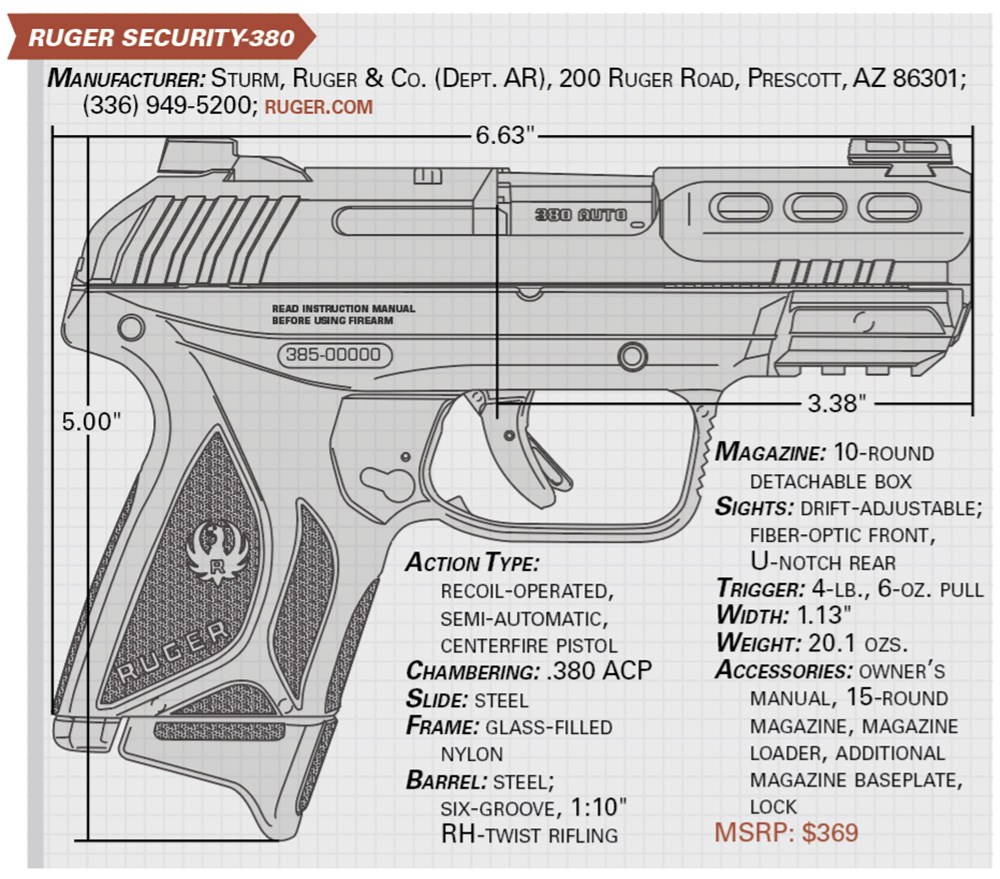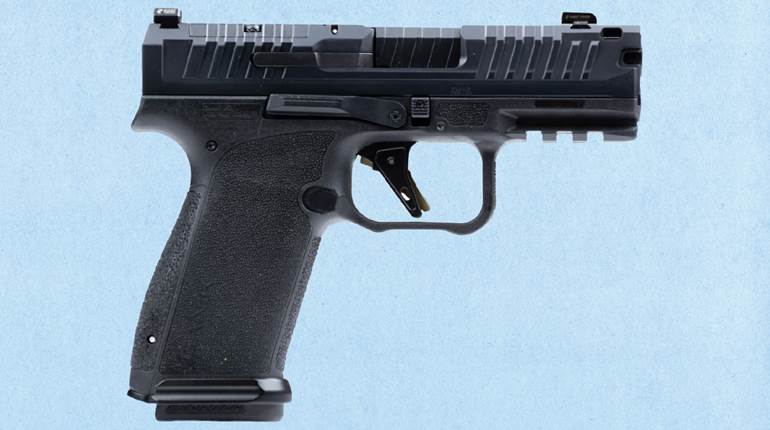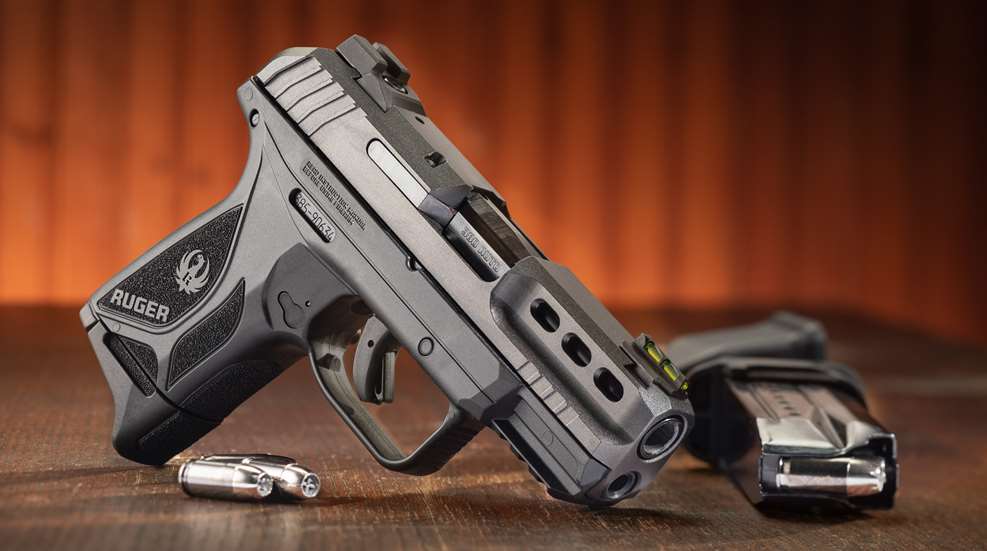
Although the majority of new concealed-carry releases from popular gun manufacturers in recent years have been chambered in 9 mm Luger, Ruger continues to innovate within the .380 ACP arena. Designed around maximum concealment and ease of use, the company had previously released the LCP II and LCP Max pistols chambered to fire the .380 cartridge, and Ruger’s newest entry, the Security-380, has been designed to take those same qualities and put them into an even easier-to-handle and softer-shooting platform.
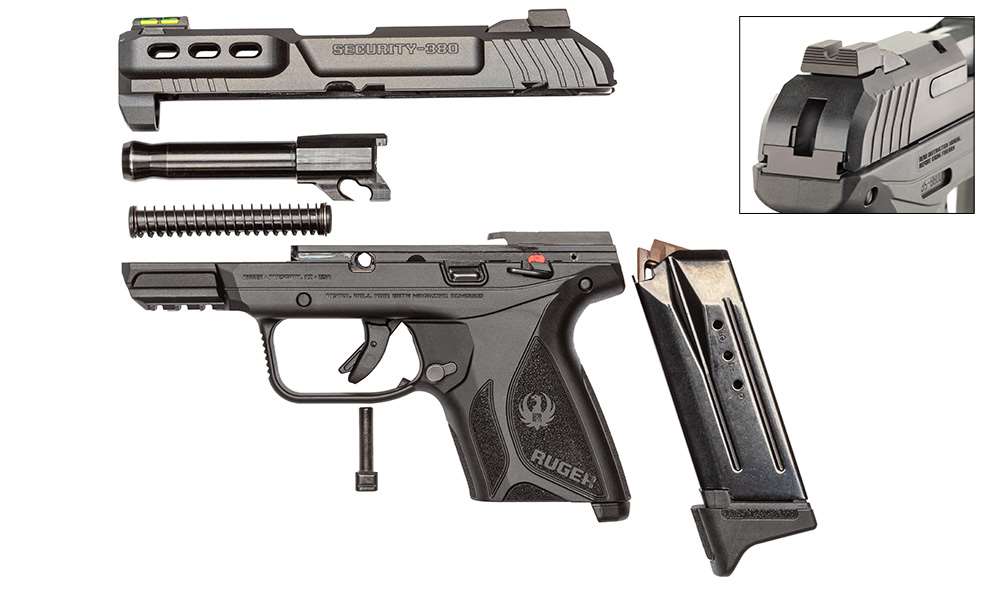
The Ruger Security-380 is a continuation of the company’s popular Security line of handguns. The original Ruger Security-9 is a sturdy defensive pistol chambered in 9 mm Luger that the company offers at an affordable price point. In the same vein, the Ruger Security-380 is intended for those who want a carry gun they can trust for a price that won’t break the bank. Also in line with the earlier entries in the Security series, the Security-380 features a Secure Action fire-control system that operates with a protected internal hammer. Unlike its predecessors, however, the Security-380 incorporates some of the company’s Lite Rack features, design elements geared specifically toward ease of operation.
The Ruger Security-380 has an overall length of 6.63". Its black-oxide-finished, steel barrel measures 3.38" long, sporting a 1:10" right-hand twist. The gun itself is 4.35" tall and 1.13" wide at the grip. It weighs in at just 20.1 ozs., and the low weight of the handgun was one of the first things we noticed when initially picking it up. In addition to its polymer frame, the gun’s light weight can also be attributed to six lightening cuts in its slide, three on each side, which really helped to make the Security-380 feel quite well balanced.
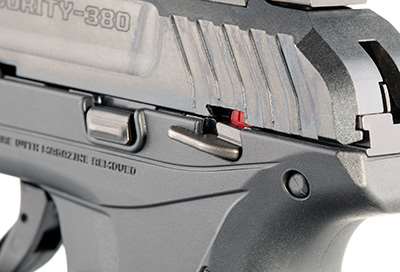
The frame of the Security-380 is made of a glass-filled nylon. This makes the frame itself durable and quite rigid. Controls are built around right-handed shooters, requiring a left-handed shooter to alter his or her shooting grip to actuate them. We found the left-side manual safety lever to be rather stiff, but repeated activations and deactivations over the course of testing brought it to a workable level. Moving to the front of the frame, a three-slot Picatinny rail allows for the attachment of compact lights and lasers.
A drift-adjustable, blacked-out, steel rear sight is dovetailed into the top of the slide, and a tactical ledge allows it to be used one-handedly to rack the slide in a pinch. A high-visibility, green-fiber-optic front sight aids in fast target acquisition.
The slide itself requires very little strength to pull rearward and is quite forgiving for those who lack proper pistol-racking technique. We introduced several shooters of various experience levels to the Security-380, and none had any issue whatsoever chambering a round. The light weight of the slide also means there is very little reciprocating mass during operation; this translates to noticeably low recoil and easy follow-up shots. Both of these qualities are boons for inexperienced shooters, as well as those with conditions that affect their ability to manipulate and shoot a firearm comfortably.
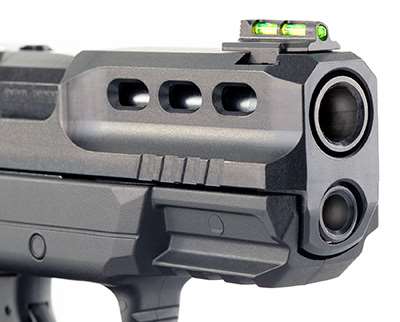
A safety blade is present inside the trigger, and its break measured right around 4 lbs., 6 ozs., on average. There is about 3/8" of travel before resistance is met, and the trigger has a short period of creep, but once that is pulled through, the break comes quickly. This is a positive attribute and likely a contributing factor to our being able to make precise shots with the Security-380 without much difficulty. We found that the trigger has a long reset—as is often the case with models that make use of an internal hammer. This being said, the longer trigger reset did not prevent shots from being fired in rapid succession.
The pistol includes two magazines. One is a 10-rounder that comes with two interchangeable baseplates in case the shooter wants to add a ledge for the pinky; with the flush baseplate fit to the 10-round magazine, we found the Security-380 to be very easy to conceal. The other magazine holds 15 rounds and sports a matching textured grip extension that rests between the handgun’s grip and the baseplate of the magazine. We found all of the magazine setups to be quite comfortable, with the 15-round extended magazine providing the best control of the gun during rapid strings of fire. A polymer, thumb-operated magazine loader is included in the box.
During velocity testing, we shot 10 rounds of three different loads over a Caldwell Ballistic Precision chronograph. The rounds used for testing were Federal Premium’s 99-grain Hydra-Shok Deep, Hornady’s 90-grain Hornady Black and Winchester’s 95-grain Train & Defend JHPs. During accuracy testing, the Hornady Black ammunition was the most consistent performer of the day, managing a five-group average of 1.11" at 7 yards.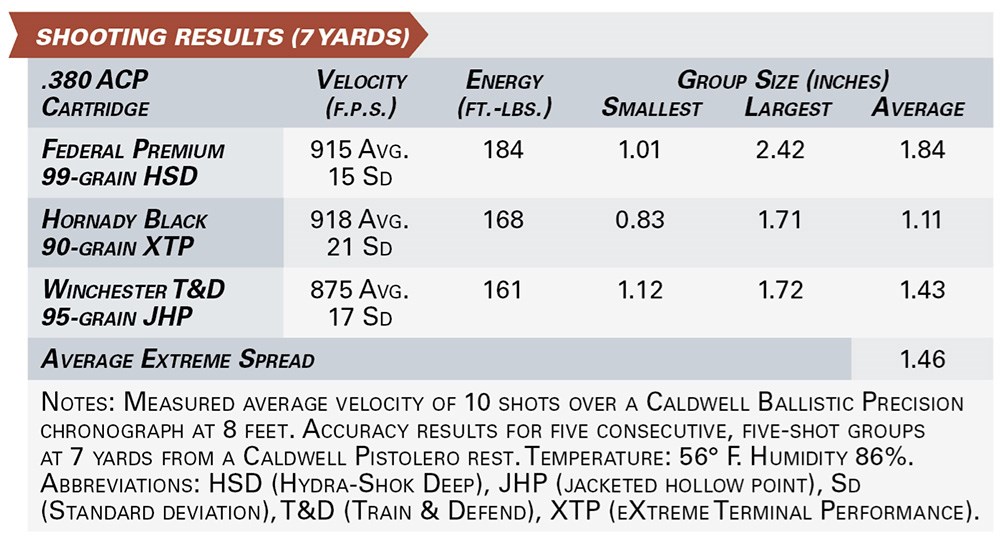
The Security-380 showed solid reliability overall. Over the course of testing, we experienced only one failure-to-eject malfunction. This failure occurred with one of our less-experienced shooters, and upon looking further into the malfunction, we agreed that it was most likely a case of limp-wristing that caused the jam. After working on the shooter’s technique, no further issues were encountered.
The Ruger Security-380 proved quite capable for a sub-$400 centerfire handgun. The size of the gun puts it in a unique place when compared with other defensive .380 ACP platforms—it is small enough to be easily concealed, yet large enough to provide added capacity and excellent control of the already light-recoiling .380 ACP cartridge. The Lite Rack features also make the pistol particularly well-suited to use by new shooters, as difficulty racking the slide and intimidating recoil are two of the biggest issues that newbies have when they step up to the firing line for the first time, and the Ruger quite effectively eliminates both of those concerns.